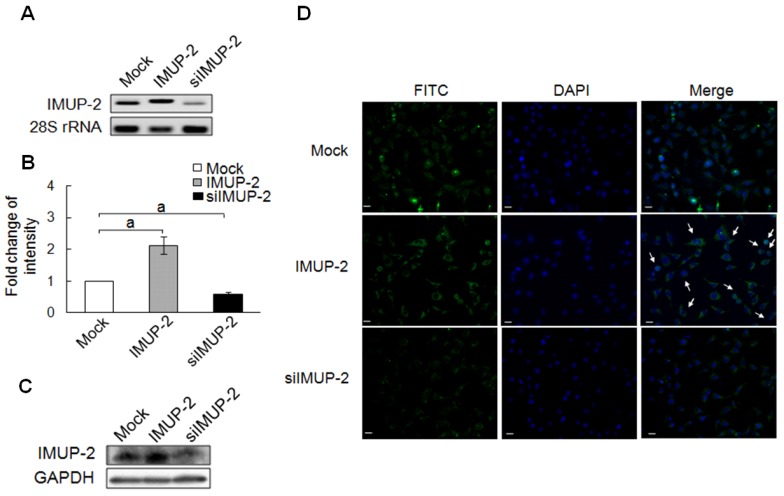User:Z3439257
| Student Information (expand to read) | ||||||||||||||||||||||||||||||||||||||||||||||||||||||||||||||||
|---|---|---|---|---|---|---|---|---|---|---|---|---|---|---|---|---|---|---|---|---|---|---|---|---|---|---|---|---|---|---|---|---|---|---|---|---|---|---|---|---|---|---|---|---|---|---|---|---|---|---|---|---|---|---|---|---|---|---|---|---|---|---|---|---|
| Individual Assessments | ||||||||||||||||||||||||||||||||||||||||||||||||||||||||||||||||
|
Please leave this template on top of your student page as I will add your assessment items here. Beginning your online work - Working Online in this course
Click here to email Dr Mark Hill | ||||||||||||||||||||||||||||||||||||||||||||||||||||||||||||||||
| Lab 1 Assessment - Researching a Topic | ||||||||||||||||||||||||||||||||||||||||||||||||||||||||||||||||
In the lab I showed you how to find the PubMed reference database and search it using a topic word. Lab 1 assessment will be for you to use this to find a research reference on "fertilization" and write a brief summary of the main finding of the paper.
| ||||||||||||||||||||||||||||||||||||||||||||||||||||||||||||||||
| Lab 2 Assessment - Uploading an Image | ||||||||||||||||||||||||||||||||||||||||||||||||||||||||||||||||
OK you are now in a group
Initially the topic can be as specific or as broad as you want. Chicken embryo E-cad and P-cad gastrulation[1] References
| ||||||||||||||||||||||||||||||||||||||||||||||||||||||||||||||||
| Lab 4 Assessment - GIT Quiz | ||||||||||||||||||||||||||||||||||||||||||||||||||||||||||||||||
|
ANAT2341 Quiz Example | Category:Quiz | ANAT2341 Student 2015 Quiz Questions | Design 4 quiz questions based upon gastrointestinal tract. Add the quiz to your own page under Lab 4 assessment and provide a sub-sub-heading on the topic of the quiz. An example is shown below (open this page in view code or edit mode). Note that it is not just how you ask the question, but also how you explain the correct answer. | ||||||||||||||||||||||||||||||||||||||||||||||||||||||||||||||||
| Lab 5 Assessment - Course Review | ||||||||||||||||||||||||||||||||||||||||||||||||||||||||||||||||
| Complete the course review questionnaire and add the fact you have completed to your student page. | ||||||||||||||||||||||||||||||||||||||||||||||||||||||||||||||||
| Lab 6 Assessment - Cleft Lip and Palate | ||||||||||||||||||||||||||||||||||||||||||||||||||||||||||||||||
| ||||||||||||||||||||||||||||||||||||||||||||||||||||||||||||||||
| Lab 7 Assessment - Muscular Dystrophy | ||||||||||||||||||||||||||||||||||||||||||||||||||||||||||||||||
| ||||||||||||||||||||||||||||||||||||||||||||||||||||||||||||||||
| Lab 8 Assessment - Quiz | ||||||||||||||||||||||||||||||||||||||||||||||||||||||||||||||||
| A brief quiz was held in the practical class on urogenital development. | ||||||||||||||||||||||||||||||||||||||||||||||||||||||||||||||||
| Lab 9 Assessment - Peer Assessment | ||||||||||||||||||||||||||||||||||||||||||||||||||||||||||||||||
| ||||||||||||||||||||||||||||||||||||||||||||||||||||||||||||||||
| Lab 10 Assessment - Stem Cells | ||||||||||||||||||||||||||||||||||||||||||||||||||||||||||||||||
As part of the assessment for this course, you will give a 15 minutes journal club presentation in Lab 10. For this you will in your current student group discuss a recent (published after 2011) original research article (not a review!) on stem cell biology or technology.
| ||||||||||||||||||||||||||||||||||||||||||||||||||||||||||||||||
| Lab 11 Assessment - Heart Development | ||||||||||||||||||||||||||||||||||||||||||||||||||||||||||||||||
| Read the following recent review article on heart repair and from the reference list identify a cited research article and write a brief summary of the paper's main findings. Then describe how the original research result was used in the review article.
<pubmed>26932668</pubmed>Development | ||||||||||||||||||||||||||||||||||||||||||||||||||||||||||||||||
| ||||||||||||||||||||||||||||||||||||||||||||||||||||||||||||||||
Lab 1
ANAT2341 Lab 1 - Online Assessment
PMID 26043223
Paper Review: This article has firstly proved that the proteins (ZP-1, ZP-2 & ZP-3) in mouse zona pellucida form functional amyloid surrounding the oocytes. Firstly, several experiments such as staining and western blot were performed to confirm that the proteins are forming amyloid structure. Then, the amino acid sequence of the proteins from six different taxa were analysed and essential amyloidogenic sites were identified. It has been described that different ZP proteins will aggregate with each other or self-aggregate in different ways, depends on the amyloidogenic sites it possess. Specifically, ZP-N repeats, which is on of the amyloidogenic sites, has been stated to be related to the recognition of sperm. Therefore, the conclusion that ZP proteins exist in the ZP as functional amyloid and may get involved in prevention of polyspermy and cross-species fertilisation has been come up with. Moreover, since the amyloidogenic sites across species seem to be conserved, the amyloid formed are expected to possess similar functions, making this study on mouse model useful on human researches. Furthermore, some proteins exist in other parts of the body also have the conserved amyloidogenic sites, part or all of their functions may be carried out through their amyloid structure formed.
Amyloid used to be associated with several neurodegenerative and prion diseases in mammals. However, it is becoming increasingly obvious that functional amyloid does exist and possesses a physiological function rather than a pathological function. The further research can be focusing on the specificity of the amyloid structure formed and the functions related. Based on the data published, a question about diagram 2A is raised. It is known that buffer was used to incubate with the PAD beads as the negative control. However, a light band can be observed in the negative control, which is not supposed to happen.
| Mark Hill 18 August 2016 - You have added the citation correctly and written a good summary of the article. Quite an interesting paper on protein structure of the ZP, amyloid cross-β sheet fibrillar structure is an interesting association.
Unfortunately I have had to take marks off the final assessment as you have not added the reference correctly. Add a link to this reference using its PMID using this code <pubmed>XXXXX</pubmed> replacing the Xs with just the PMID number (no text). You have just added the link, here is the reference: <pubmed>26043223</pubmed> I also fixed your formatting that had a space at the beginning (no deduction for this). |
Assessment 3/5 |
Lab 2
ANAT2341 Lab 2 - Online Assessment
Human trophoblasts stained with different markers
| Mark Hill 29 August 2016 - All information Reference, Copyright and Student Image template correctly included with the file and referenced on your page here.
Your image requires a legend and the reference citation correctly with the legend. You need to include the ref name for a citation, as shown below: Code: <ref name="PMID25949126"><pubmed>25949126</pubmed></ref> and with the citation added to legend below, you lost marks for no citation. |
Assessment 4.5/5 |
Human trophoblasts stained with different markers[1]
Lab 3
ANAT2341 Lab 3 - Online Assessment
| Mark Hill 31 August 2016 - Lab 3 Assessment Quiz - Mesoderm and Ectoderm development. | Assessment 1.5/5 |
Lab 4
ANAT2341 Lab 4 - Online Assessment
Lab 5
ANAT2341 Lab 5 - Online Assessment
Assessment: survey. Completed.
Lab 6
ANAT2341 Lab 6 - Online Assessment
- Interferon Regulatory Factor 6 (IRF6) is a well established gene which mutations are related with non-syndromic Cleft lip and palate (NSCL/P).
- PMID 21331089 & PMID 22438645 were reviewed to achieve a better understanding about IRF6 mutations and NSCL/P.
- It seems that there are many types of mutations related with IRF6 gene, and different mutations are related with different outcomes. IRF6 has been identified to play a role in keratinocyte proliferation/differentiation switch. Further investigation has suggested that IRF6 is involved in the formation of oral periderm. The spatio-temporal regulation of the keratinocytes established by IRF6 protein is able to ensure the appropriate palatal adhesion. Moreover, p63 has been identified as an upstream regulator of IRF6, and mutations at p63 locus may cause similar pathological effects as the IRF6 mutations.
- Reference
<pubmed>21331089</pubmed> <pubmed>22438645</pubmed>
Lab 7
ANAT2341 Lab 7 - Online Assessment
Group Project
Reference
Jung R, Choi JH, Lee HJ, Kim JK, Kim GJ. Effect of Immortalization-Upregulated Protein-2 (IMUP-2) on Cell Death of Trophoblast. Development & Reproduction. 2013;17(2):99-109. doi:10.12717/DR.2013.17.2.099.
Lab Attendance
Z3439257 (talk) 14:35, 5 August 2016 (AEST) Z3439257 (talk) 14:40, 12 August 2016 (AEST) Z3439257 (talk) Z3439257 (talk) Z3439257 (talk) 13:20, 9 September 2016 (AEST)
referencing
PMID 24614230
- ↑ <pubmed>25949126</pubmed>



